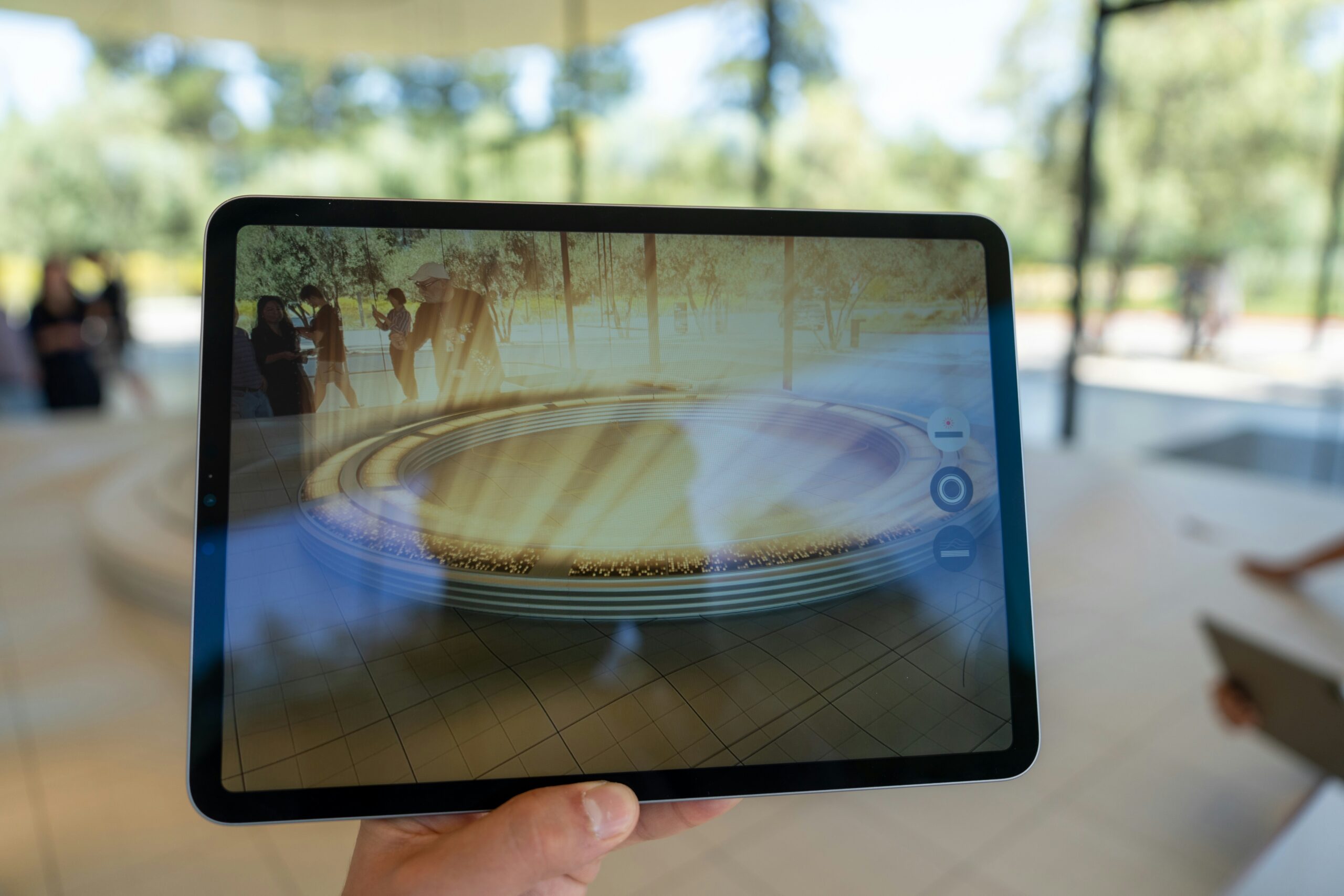Enhancing Engagement: The Role of Augmented Reality in Experiential Marketing
August 23, 2025 | by qqvmedia.com


Understanding Augmented Reality
Augmented reality (AR) is an innovative technology that overlays digital information and virtual elements onto the real-world environment. This immersive experience is achieved by using devices such as smartphones, tablets, and AR glasses, which allow users to interact with both physical and digital worlds simultaneously. By utilizing advanced sensors, cameras, and computer vision, AR enhances the user’s perception of reality, creating interactive experiences that blend the tangible and virtual.
The functionality of augmented reality revolves around the integration of digital content with the physical environment. When a user points their device’s camera at a specific location or object, the AR system recognizes it and injects relevant virtual information, such as images, animations, or text. This capability not only enriches the user’s experience but also has significant implications for various industries, including marketing, education, and entertainment.
It’s also essential to differentiate augmented reality from virtual reality (VR), as they are often confused. While AR adds digital elements to the real world, VR immerses the user in a completely virtual environment, isolating them from their actual surroundings. This fundamental distinction highlights how AR can enhance real-life experiences, making it particularly appealing for marketing. Brands utilize augmented reality to engage customers on a deeper level, creating memorable interactions that can influence their purchasing decisions.
Several applications of augmented reality illustrate its potential impact. Retailers are employing AR to offer virtual try-ons, enabling customers to visualize products before making a purchase. In addition, museums utilize this technology to provide interactive exhibits that enrich the visitor’s understanding of exhibits through informative content. As the proliferation of devices equipped with AR capabilities continues, the significance of this technology in various sectors, particularly marketing, becomes increasingly evident.
The Evolution of Experiential Marketing
Experiential marketing has undergone significant transformation since its inception, transitioning from traditional marketing strategies to more interactive and immersive experiences. Initially, brands would engage customers through straightforward advertising methods, such as print and television advertisements. These mediums primarily focused on conveying messages to a passive audience, leading to limited levels of engagement and interaction. Over time, brands recognized the need to create deeper connections with their consumers, prompting a shift towards strategies that emphasized experiences rather than mere information delivery.
In the early 2000s, the concept of experiential marketing began gaining traction, as brands sought to foster emotional connections with their audiences through memorable experiences. This led to unique brand activations, live events, and the use of sponsorships, which offered consumers opportunities to engage with the brand in a more meaningful way. Created with an emphasis on interaction, these campaigns aimed to elevate customer experiences, thereby enhancing brand loyalty and long-term engagement. Brands such as Coca-Cola and Red Bull became pioneers in this field, crafting experiences that consumers actively wanted to participate in.
With rapid advancements in technology, the landscape of experiential marketing has evolved further. The emergence of digital marketing tools and platforms has enabled brands to reach wider audiences while providing tailored experiences. From immersive virtual reality (VR) platforms to augmented reality (AR) applications, technology has transformed traditional marketing methods into interactive experiences. AR, in particular, has allowed customers to visualize products in real-time, using their smartphones or other devices to interact with brands in a way that transcends geographical boundaries.
Consequently, the trajectory of experiential marketing continues to integrate technology, enabling brands to foster more engaging connections. By leveraging digital tools, brands are not only enhancing the customer experience but also continuously redefining how they interact with their audiences, leading to deeper relationships built through innovative and memorable experiences.
Benefits of Integrating AR into Experiential Marketing
Augmented Reality (AR) has emerged as a transformative technology that significantly enhances experiential marketing campaigns. One of the key benefits of integrating AR is its ability to foster increased customer engagement. By providing interactive experiences that overlay digital information onto the real world, AR captivates audiences in ways traditional marketing methods cannot. This immersive format encourages users to interact with the brand, leading to deeper emotional connections and a more profound understanding of products or services.
Moreover, augmented reality provides enhanced storytelling opportunities that enable brands to convey narratives in a more dynamic manner. Through AR applications, marketers can illustrate their brand story by layering visuals, sounds, and interactive elements that resonate with consumers. This multi-sensory approach not only entertains but also informs viewers, aiding in better retention of the brand message.
Memorable brand experiences are another crucial advantage of AR integration. By offering unique and engaging interactions, brands can distinguish themselves in a crowded marketplace. For instance, IKEA utilizes AR through its app, allowing customers to visualize how furniture items would fit within their spaces. This level of personalization not only boosts customer satisfaction but also influences purchasing decisions.
Furthermore, utilizing augmented reality allows brands to gather valuable data and insights that can inform future marketing strategies. By analyzing user interactions within AR experiences, marketers can identify trends, preferences, and engagement metrics. This analytical perspective contributes significantly to refining targeting and enhancing the overall impact of marketing campaigns.
Notable examples of successful AR campaigns include the Pokémon GO phenomenon, which blended the physical world with digital gameplay, and the Pepsi Max bus shelter advertisement that astonished passersby with AR visuals. These cases underscore how brands can effectively leverage augmented reality to enhance their marketing efforts, create memorable experiences, and foster lasting connections with customers.
Future Trends: AR in Experiential Marketing
The landscape of experiential marketing is poised for significant transformation as augmented reality (AR) continues to evolve. With advancements in technologies such as 5G, artificial intelligence (AI), and machine learning, the integration of AR in experiential marketing is becoming increasingly sophisticated, creating opportunities for brands to engage consumers in innovative ways. The deployment of 5G networks is particularly noteworthy, as it promises to enhance the speed and reliability of AR applications. This improved connectivity allows for real-time data processing and richer content delivery, thus facilitating more immersive experiences that can captivate audiences.
Artificial intelligence plays a critical role in personalizing AR interactions. By leveraging AI algorithms, brands can analyze consumer behavior and preferences to customize AR experiences tailored to individual users. For instance, in retail, AI-driven AR applications can suggest products based on user interactions, thereby enhancing the shopping experience and driving conversions. Additionally, machine learning further refines these interactions over time, adapting to shifts in consumer behavior and preferences, ensuring that the AR applications remain relevant and engaging.
However, the adoption of augmented reality in experiential marketing does not come without its challenges. Brands must invest in the requisite technology and expertise to implement AR solutions effectively, which can be a substantial barrier for some. Moreover, as AR experiences become more sophisticated, ensuring a seamless user experience across various devices and platforms is paramount. To navigate these challenges, brands should consider developing strategic partnerships with technology providers and focusing on ongoing consumer education to foster understanding and acceptance of AR applications.
Looking ahead, the interplay of these technologies positions augmented reality as a vital component of experiential marketing strategies. As brands embrace these advancements, they will not only enhance engagement but also set the stage for the future of consumer interaction.
RELATED POSTS
View all


